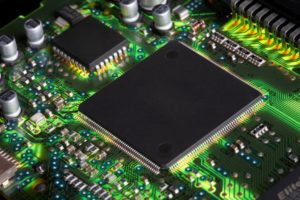This article will explain the difference between a microcontroller and a microprocessor. This article will assist you in gaining the knowledge required to begin any projects involving a microprocessor and microcontroller.
What is a MicroController??

Microcontrollers are more complete logical units: they incorporate, in a single chip, the microprocessor, and all required peripherals: memories, I/O pins, timers, serial interface, analog-to-digital converters, power management, etc.
This allows for easier application in single tasks: the designer only needs to choose the microcontroller instead of selecting all the peripherals and designing the interface between them. Different from a microprocessor, a microcontroller is programmable, that is, it can receive and store code via serial or parallel communication.
What is a MicroProcessor??

Microprocessors are the core of any modern computer: they are single-chip processing units responsible for computing each operation stored in the program. The microprocessor reads the algorithm from external memory and executes the commands using a specific language. This language defines the type of microprocessor, which can be RISC (Reduced Instruction Set Computer) or CISC (Complex Instruction Set Computer).
Application Comparison

Microcontrollers are more suitable for applications that require optimized cost and a reduced number of components. Due to the smaller number of external components required, they can be easily implemented in portable devices.
For instance, microcontrollers are largely used on smartwatches, mobile phones, cameras, and automobiles. Microcontrollers are also the best choice in applications that require a high level of determinism and reliability, as the whole digital system is designed to work properly from the factory.
Applications of Microcontroller
Microcontrollers are mainly used in devices like:
- Mobile phones
- Automobiles
- CD/DVD players
- Washing machines
- Cameras
- Security alarms
- Keyboard controllers
- Microwave oven
- Watches
- Mp3 players
Microprocessor applications require the whole digital system to be developed by the designer, which may introduce functional errors. As the name suggests, microcontrollers are more suitable for controlling processes, receiving sensor data, processing it, and providing controlling signals to external actuators.
Applications of Microprocessor
Microprocessors are mainly used in devices like:
- Calculators
- Accounting system
- Games machine
- Complex industrial controllers
- Traffic light
- Control data
- Military applications
- Defense systems
- Computation systems
Microprocessor vs Microcontroller
 |  |
|---|---|
| The microprocessor is the heart of the computer system. | The microcontroller is the heart of an embedded system. |
| It is only a processor, so memory and I/O components need to be connected externally. | The microcontroller has a processor along with internal memory and I/O components. |
| It cannot be used in a compact system. Therefore microprocessor is inefficient. | It can be used in a compact system. Therefore microcontroller is more efficient. |
| The microprocessor has fewer registers. Therefore most of the operations are memory-based. | The microcontroller has more registers. Therefore a program is easier to write. |
| A microprocessor has a zero status flag. | A microcontroller has no zero flags. |
| The structure of the microprocessor is flexible. | The structure of the microcontroller is not flexible. |
Conclusion Microcontroller vs Microprocessor

Microprocessors and Microcontrollers are devices designated to similar niches, and their application range may overlap in some cases. However, they are designed for different things: microcontrollers are intended to control a system, receive information from external sensors, and make a decision to perform a single task.
whereas microprocessors are designed to process large amounts of data very fast and operate in a more general fashion. Before selecting between both, the engineer should consider the type of application intended, the amount of processing power needed, and design constraints, such as memory, power consumption, cost, and size.